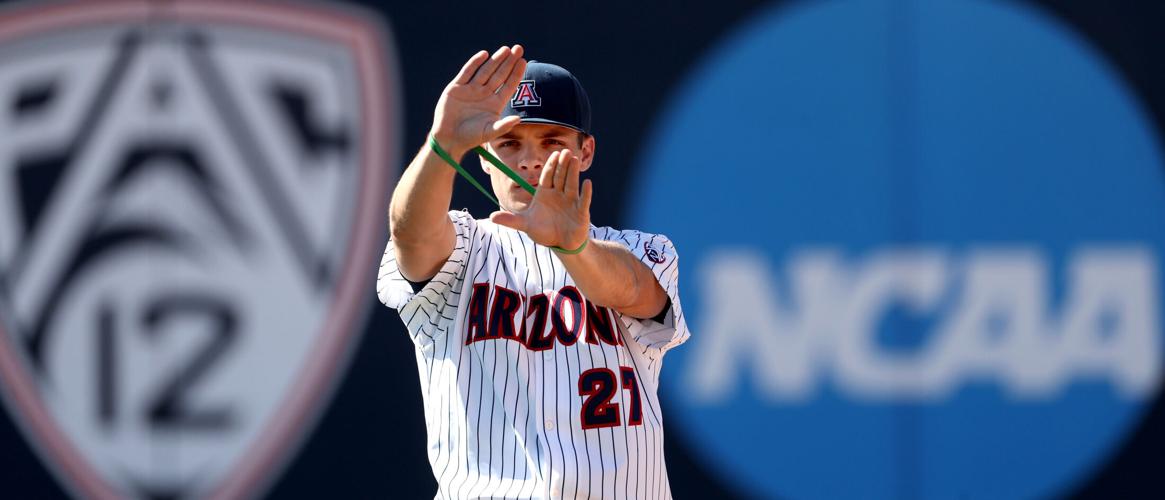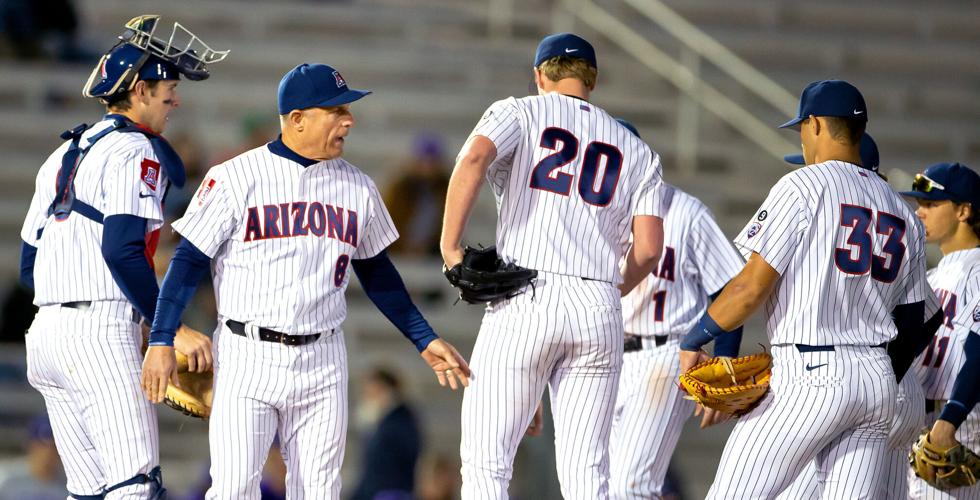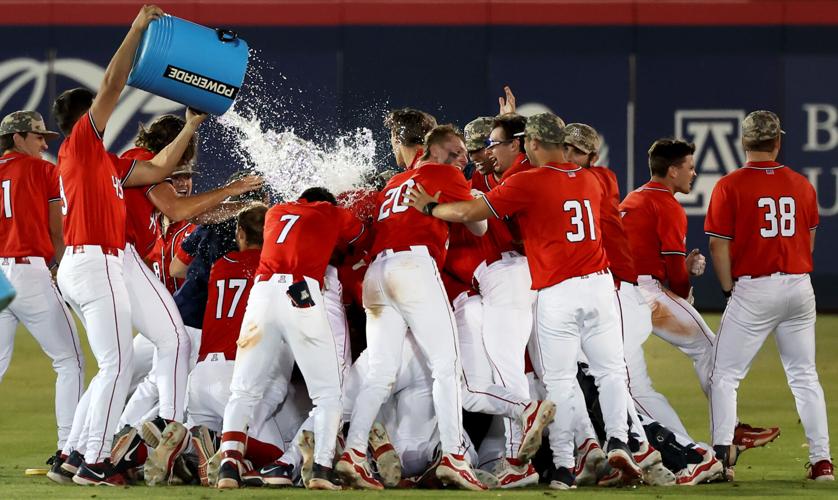At 5:34 p.m. Sunday, a pleasant surprise popped up on the social-media site formerly known as Twitter.
Tucson would be hosting a regional in the NCAA Baseball Tournament.

Michael Lev is a senior writer/columnist for the Arizona Daily Star, Tucson.com and The Wildcaster.
Defying convention and recent precedent, the selection committee did the right thing. It shoved Arizona’s RPI to the side and rewarded the Wildcats for their body of work (Pac-12 regular-season and tournament championships) and their strength of schedule (No. 1 in nonconference games).
It was another successful comeback of sorts for the Cardiac Cats, who wouldn’t have been in the discussion if not for walk-off wins over Oregon State and USC to clinch those twin titles.
Now Arizona must prove its worth. The Wildcats must show they truly deserved to be one of the 16 regional hosts. It won’t be easy.
Arizona’s opponent Friday night, Grand Canyon, has to be one of the strongest 4-seeds in any regional. Dallas Baptist — which has an RPI of 17, for what it’s worth; Arizona’s is 31 — could have been a host. West Virginia has one of the best players in the country in JJ Wetherholt, who’s capable of being a one-man wrecking crew (see WVU’s series at Hi Corbett Field in February 2023).

‘Anything goes,’ UA senior reliever Dawson Netz said of the NCAA Tournament. ‘Everyone’s fired up. Doesn’t matter if you’re playing a mid-major, Power Five, everyone’s just trying to survive.’
“Anything goes,” senior reliever Dawson Netz, who’s about to play in his fourth NCAA Tournament, said Monday. “Everyone’s fired up. Doesn’t matter if you’re playing a mid-major, Power Five, everyone’s just trying to survive. I think that’s the biggest thing. You just gotta stay in every single game. You never know if you’re gonna have to win it in the ninth.”
With this UA team, that’s always a distinct possibility. It’s happened multiple times this season.
The Wildcats were trending that way when they visited GCU on April 16. Trailing 5-2 entering the top of the ninth, they scored a pair of runs and had runners on second and third with one out. The Lopes held on for a 5-4 win.
That squared the season series. GCU won it in decisive fashion on April 30 by a score of — this is not a typo — 24-8.
Context is important here. It was a midweek game, and those can be weird. Four of the pitchers Arizona used — including three freshmen — aren’t likely to be on the 27-man roster for the regional. They allowed 16 runs (14 earned) in 1²/³ innings.

Arizona coach Chip Hale, second from left, walks off the mound while talking with the defense after a pitching change during Arizona’s 2022 home opener against Grand Canyon at Hi Corbett Field.
Fun fact: GCU was the opponent for Chip Hale’s first home game as UA coach, on Feb. 22, 2022. The Lopes won that game 19-3.
GCU is 5-4 vs. Arizona during Hale’s tenure. The two have split their past 10 meetings — including the Wildcats’ 12-6 win in the NCAA regional here in 2021.
Arizona swept its way through that one, defeating GCU once and UC Santa Barbara twice. A sweep this year seems like a much less likely outcome.
Although they come in having won four of their past five and 10 of their past 14, the Wildcats haven’t played their best ball of late. Oregon State throttled them twice before the Cats took the series finale to clinch the regular-season crown. Aside from Cam Walty’s pitching, they didn’t do anything particularly well in the first six innings of the Pac-12 Tournament championship game vs. USC before rallying.
Asked during ESPN2’s selection show Monday morning which regional he found most compelling, analyst Mike Rooney picked Tucson.
Would you rather be in 13th-seeded Arizona’s regional, featuring Dallas Baptist (RPI 17), West Virginia (37) and GCU (96)? Or 15th-seeded OSU’s, featuring UC Irvine (27), Nicholls (61) and Tulane (86)?
If the Wildcats should advance, keep in mind what’s possible in the Super Regional round. The Tucson Regional is paired with the Chapel Hill Regional, hosted by No. 4 overall seed North Carolina and featuring ... LSU.
Arizona vs. the Fighting Jay Johnsons at Hi Corbett Field for a trip to Omaha? Where do we sign up?
Speaking of LSU, the Tigers were one of a record 11 SEC teams to make the 64-team NCAA field. While the committee correctly assessed Arizona’s résumé, that still feels wrong.

The Arizona Wildcats dogpile in center field after a walk-off, come-from-behind 4-3 win against Oregon State at Hi Corbett Field to take the last-ever Pac-12 regular-season championship on May 18.
ESPN’s graphic depicting the 16 national seeds had only three school logos — Arizona, OSU and UCSB — west of the Rockies. Most were in the Southeast.
This isn’t a new problem for what’s supposed to be a national tournament. It’s unclear whether realignment will help or hurt the cause starting next year.
UCLA, USC and Oregon (which made the field) might dominate the mediocre Big Ten. Cal (one of the first four out) and Stanford might benefit from the ACC’s reputation. Likewise, Arizona, ASU and Utah in the Big 12 (although it didn’t help TCU this year).
If Arizona’s inclusion in the top 16 is a sign that the committee is moving away from RPI as the be-all, end-all metric, that’s a positive development. The Wildcats had the lowest RPI of any regional host. Committee chairman Matt Hogue told ESPN that the group took a “holistic approach” and considered a “variety of factors,” including common opponents, conference success, series wins, consistency and strength of schedule.
The latter is what got Florida in despite a 28-27 overall record, a 13-17 mark in SEC play and, at one point, six consecutive series losses. SOS also helped Arizona, so if you’re a UA fan, you can’t really complain about the Gators.
Feel free to criticize a system that still had Florida one spot ahead of Arizona in RPI. Four other SEC teams that went 13-17 in conference play ranked between 20 and 24.
If the NCAA said RIP to RPI, would anyone object?
Thankfully, in Arizona’s case, the committee basically ignored it. As a result, we have postseason baseball in Tucson.
Can’t wait.
The Arizona baseball team watches the NCAA selection show in the home locker room at Hi Corbett Field and finds out its seeding (13) and opponent (Grand Canyon) in the upcoming NCAA Tournament (video by Michael Lev / Arizona Daily Star)









